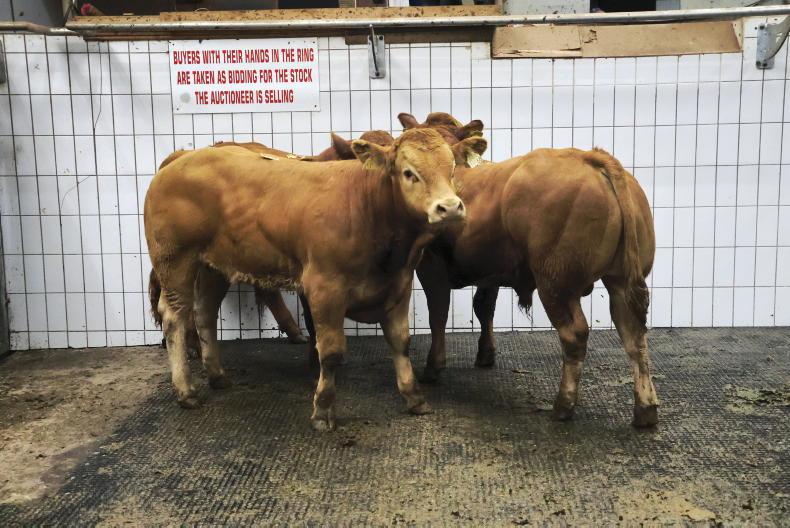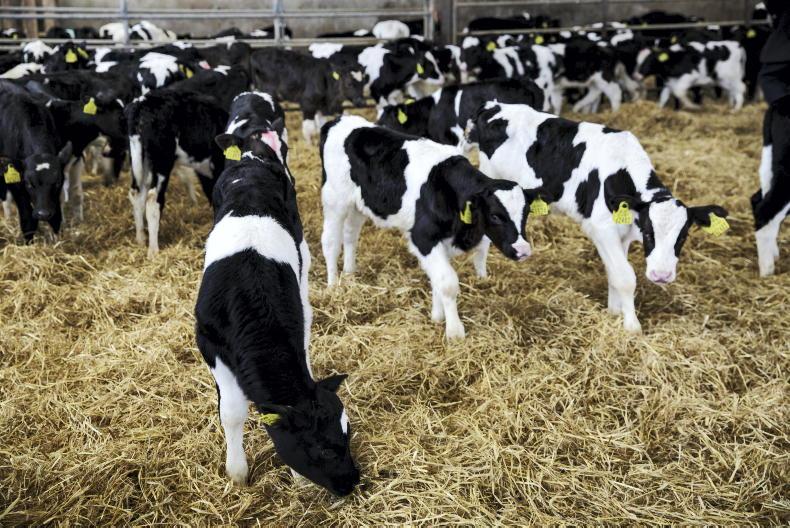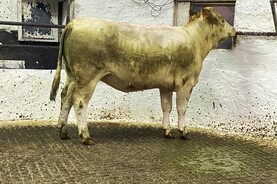The number of cattle exported from Ireland live for the year to date in 2025 is approaching 300,000 head following a 35,273 increase.
The latest data published by Bord Bia for the week of 12 July 2025 shows exported of 293,000 head running 13.7% higher.
As can be seen in Table 1, the increase is being underpinned by calf exports increasing by 26,105 head, or 13.6%, and recorded at 218,470 calves.
Weanling exports are running 31.3% higher, but the numerical increase is lower relative to calves, with exports of 27,876 head representing an increase of 6,639 on the corresponding period in 2024.
Finished cattle exports of 26,772 head have recorded a 2,324, or 9.5%, lift on 2024 levels, while store cattle exports of 19,882 head are steady.
Main destinations
Spain has overtaken the Netherlands as the primary export market, with 97,742 livestock already exported there. This represents an increase of 19,992 head or a 26% lift.

Exporters have also been driving the trade for quality weanlings - these November 2024-born Limousin-cross bulls weighed 377kg and sold for €2,180 (€5.78/kg) in Ennis on Tuesday 15 July.
The Spanish market has been contending with tighter supplies and lower imports from other European countries and keen demand from north African markets, which has fueled greater demand for Irish stock.
After a slow start, the Dutch market performed well and is ahead of previous years in quarter two of 2025, with imports of 84,738 cattle (mainly calves) from Ireland.
Domestic supplies have been hit by both nitrates restrictions reducing births from the dairy herd and the bluetongue virus curtailing availability of calves and import volumes from eastern European sources.
This is one of the primary reasons for exports to Poland increasing by 10,599 head to 25,853. This is the highest level of exports recorded for the period.
Higher exports to Northern Ireland are being driven by tight supplies of finished cattle and a wide differential between finished cattle prices for much of the year providing the opportunity for exporters to operate and generate a margin despite processing challenges.
As detailed in Table 2, the Italian market is performing excellently, with both calf export and high-end weanlings benefiting from tight cattle supplies across Europe.
The same can be said of Greece, which is an excellent destination for premium-quality weanlings.
The reduction in weanlings to Morocco is directly influenced by higher cattle prices in Ireland eroding margins attainable.
This is also the main contributing factor for reduced exports to Hungary, Romania and Malta, with many cattle exported to these destinations first and then exported to north Africa at a later time.
The number of cattle exported from Ireland live for the year to date in 2025 is approaching 300,000 head following a 35,273 increase.
The latest data published by Bord Bia for the week of 12 July 2025 shows exported of 293,000 head running 13.7% higher.
As can be seen in Table 1, the increase is being underpinned by calf exports increasing by 26,105 head, or 13.6%, and recorded at 218,470 calves.
Weanling exports are running 31.3% higher, but the numerical increase is lower relative to calves, with exports of 27,876 head representing an increase of 6,639 on the corresponding period in 2024.
Finished cattle exports of 26,772 head have recorded a 2,324, or 9.5%, lift on 2024 levels, while store cattle exports of 19,882 head are steady.
Main destinations
Spain has overtaken the Netherlands as the primary export market, with 97,742 livestock already exported there. This represents an increase of 19,992 head or a 26% lift.

Exporters have also been driving the trade for quality weanlings - these November 2024-born Limousin-cross bulls weighed 377kg and sold for €2,180 (€5.78/kg) in Ennis on Tuesday 15 July.
The Spanish market has been contending with tighter supplies and lower imports from other European countries and keen demand from north African markets, which has fueled greater demand for Irish stock.
After a slow start, the Dutch market performed well and is ahead of previous years in quarter two of 2025, with imports of 84,738 cattle (mainly calves) from Ireland.
Domestic supplies have been hit by both nitrates restrictions reducing births from the dairy herd and the bluetongue virus curtailing availability of calves and import volumes from eastern European sources.
This is one of the primary reasons for exports to Poland increasing by 10,599 head to 25,853. This is the highest level of exports recorded for the period.
Higher exports to Northern Ireland are being driven by tight supplies of finished cattle and a wide differential between finished cattle prices for much of the year providing the opportunity for exporters to operate and generate a margin despite processing challenges.
As detailed in Table 2, the Italian market is performing excellently, with both calf export and high-end weanlings benefiting from tight cattle supplies across Europe.
The same can be said of Greece, which is an excellent destination for premium-quality weanlings.
The reduction in weanlings to Morocco is directly influenced by higher cattle prices in Ireland eroding margins attainable.
This is also the main contributing factor for reduced exports to Hungary, Romania and Malta, with many cattle exported to these destinations first and then exported to north Africa at a later time.







 This is a subscriber-only article
This is a subscriber-only article










SHARING OPTIONS: